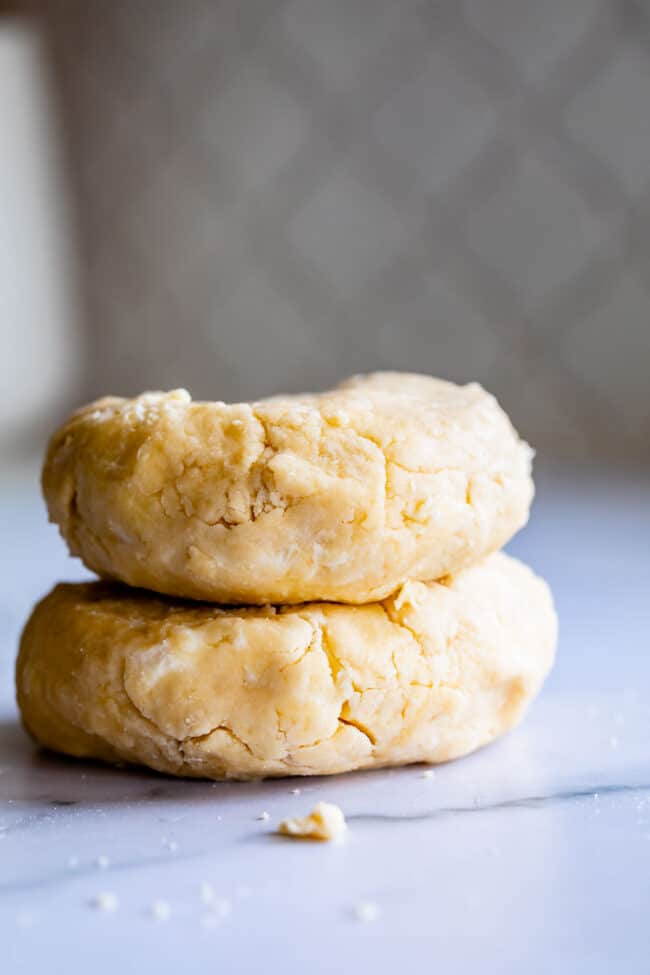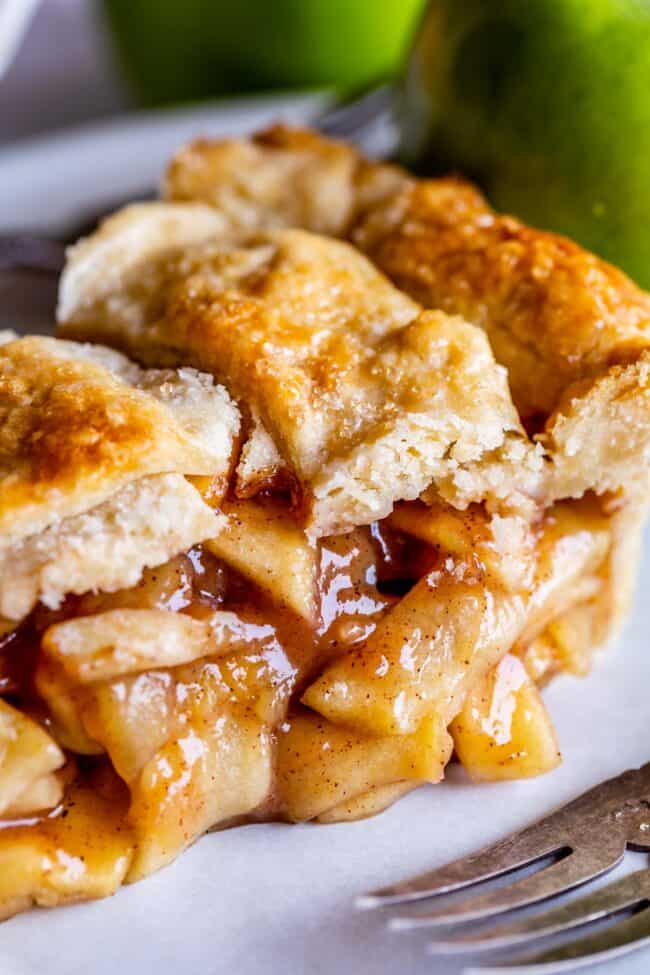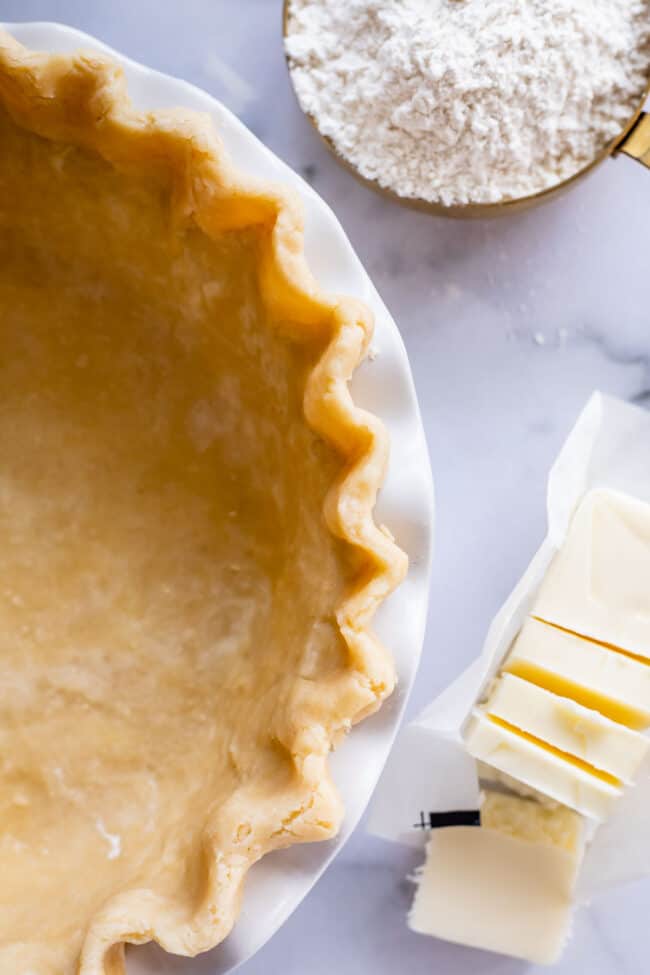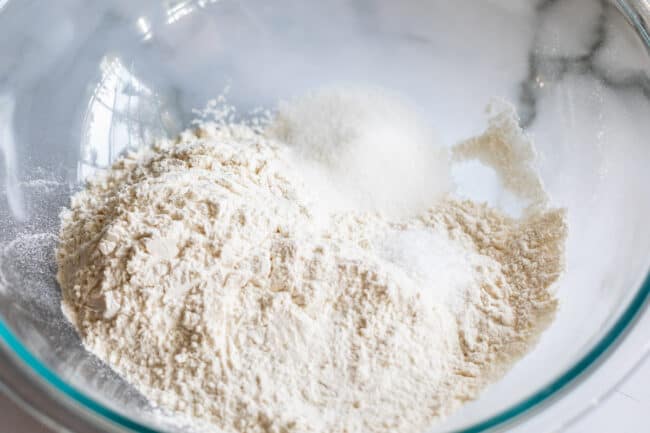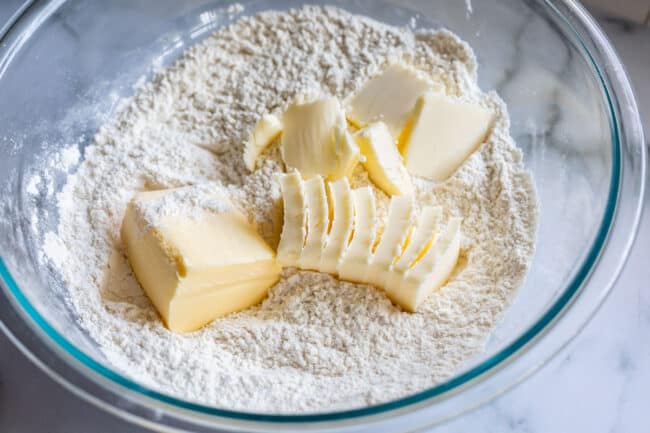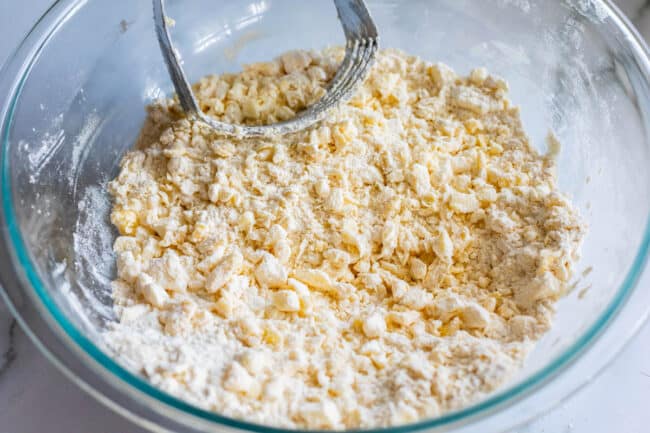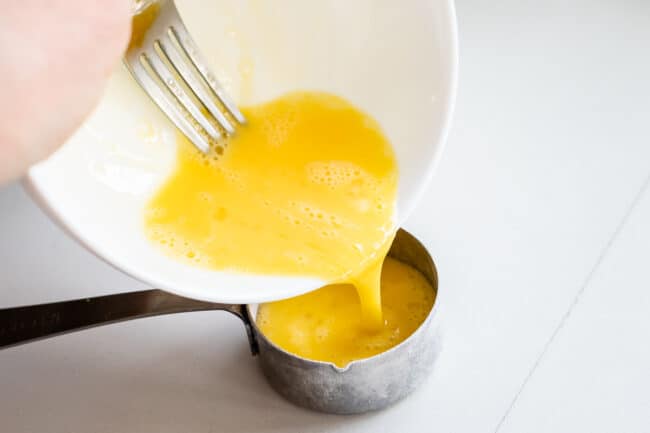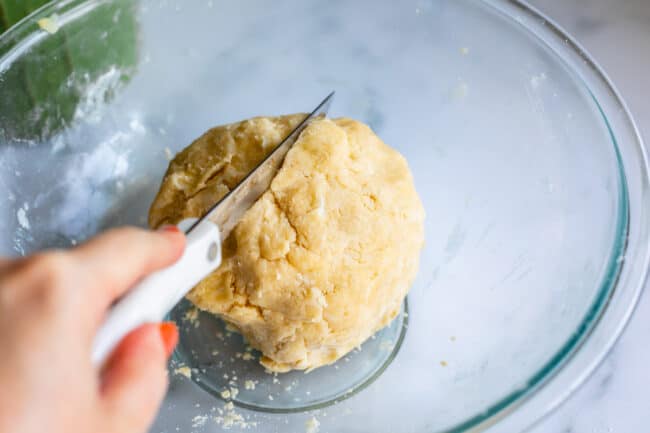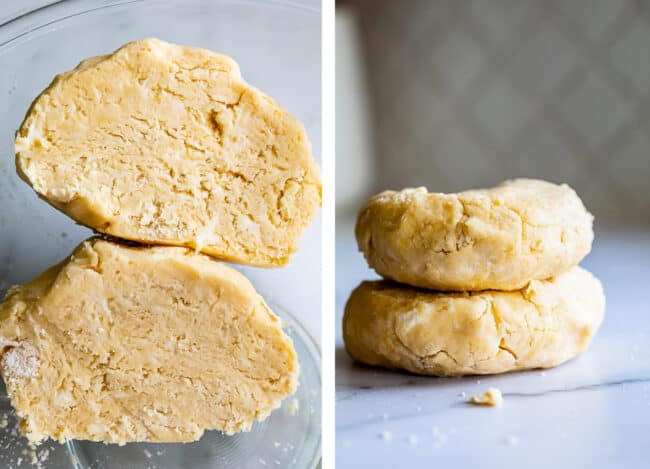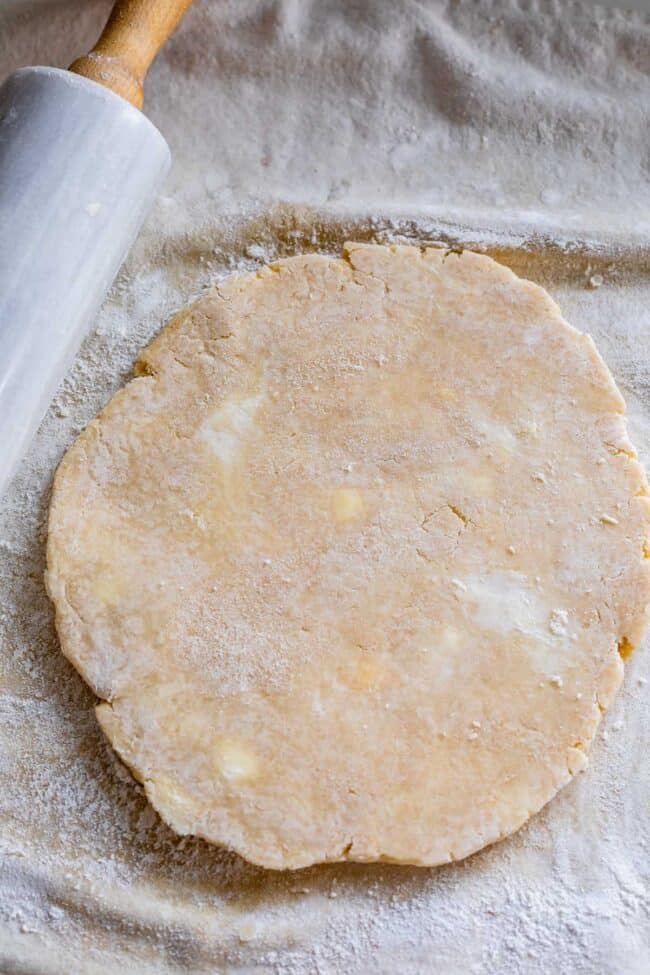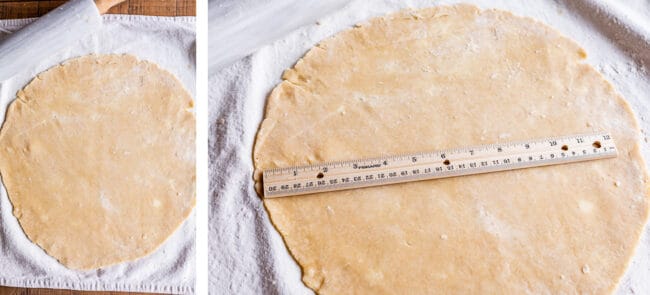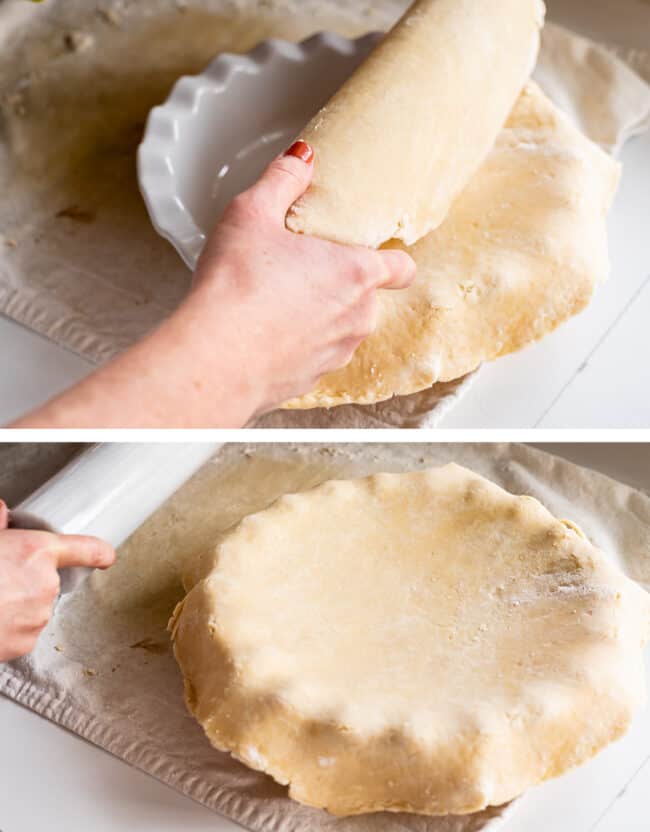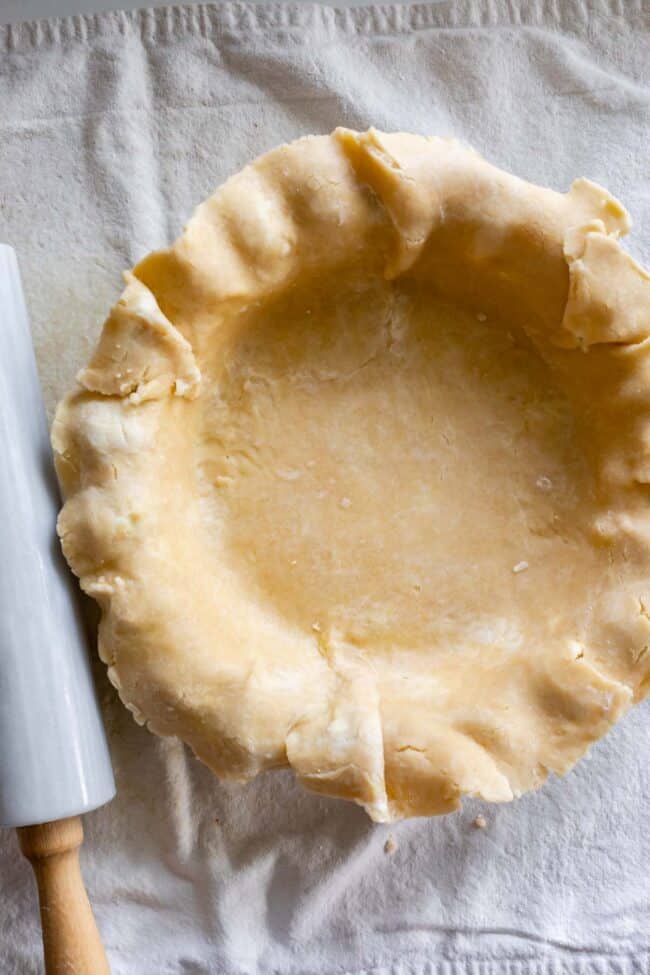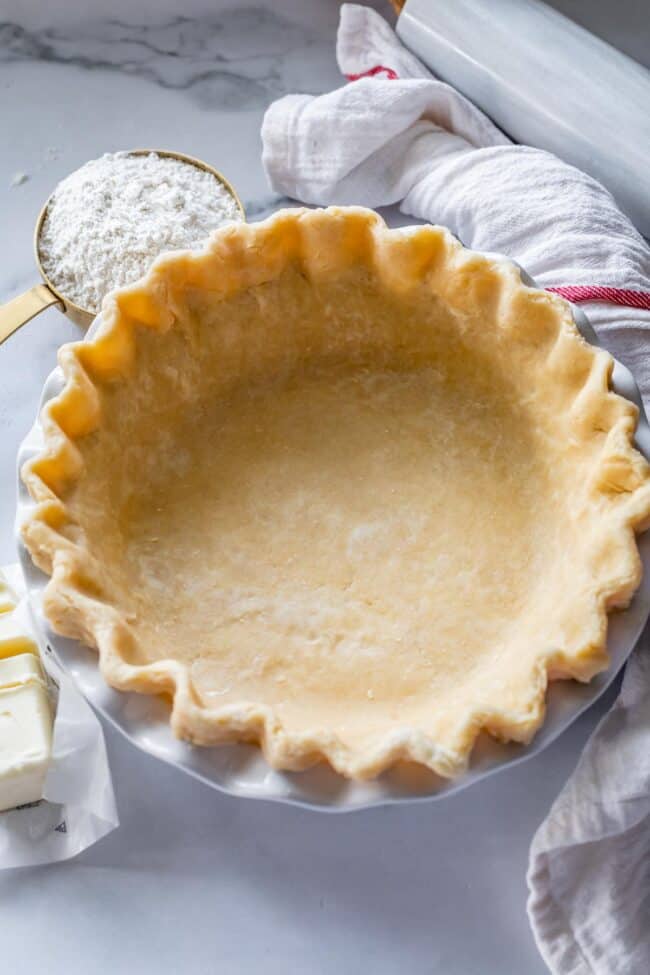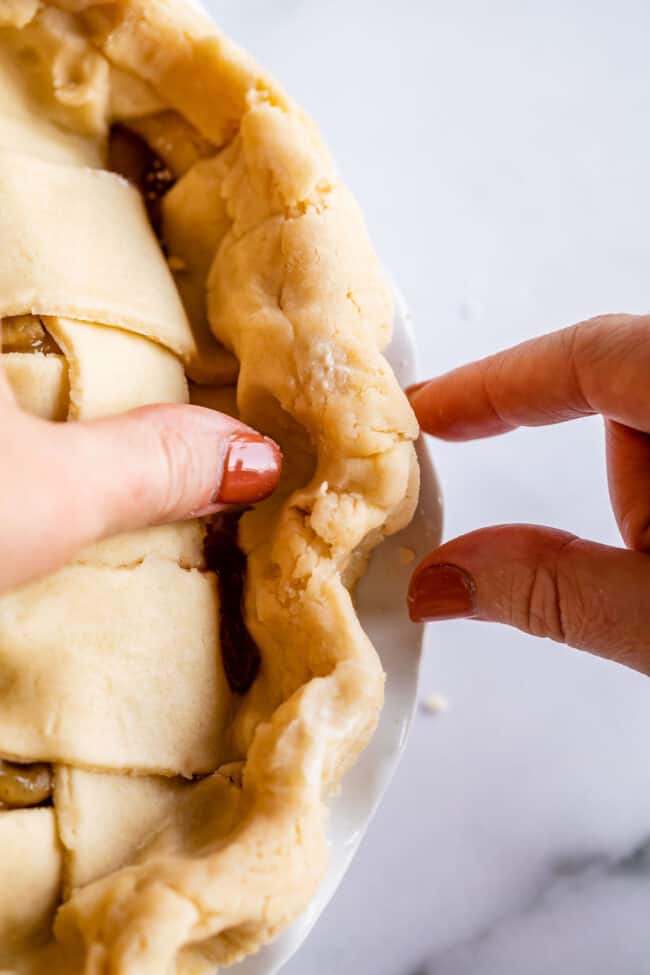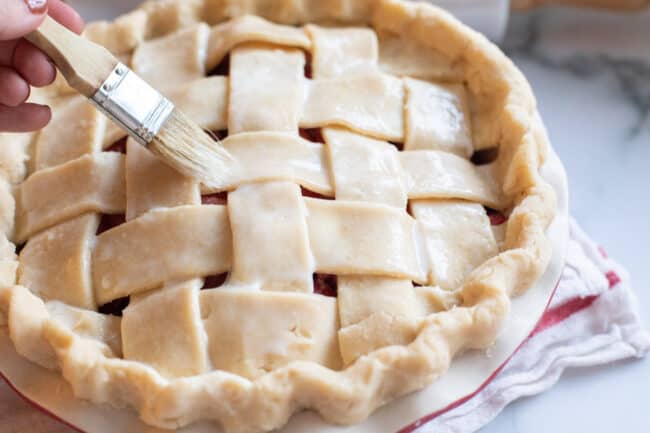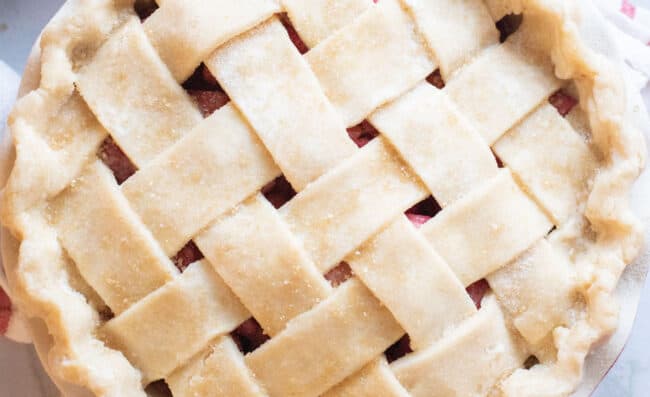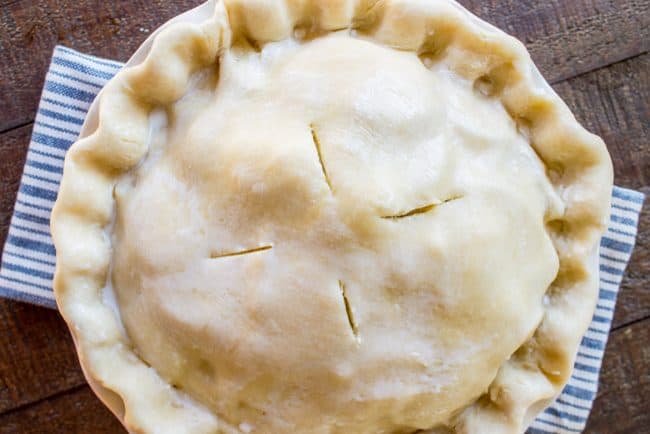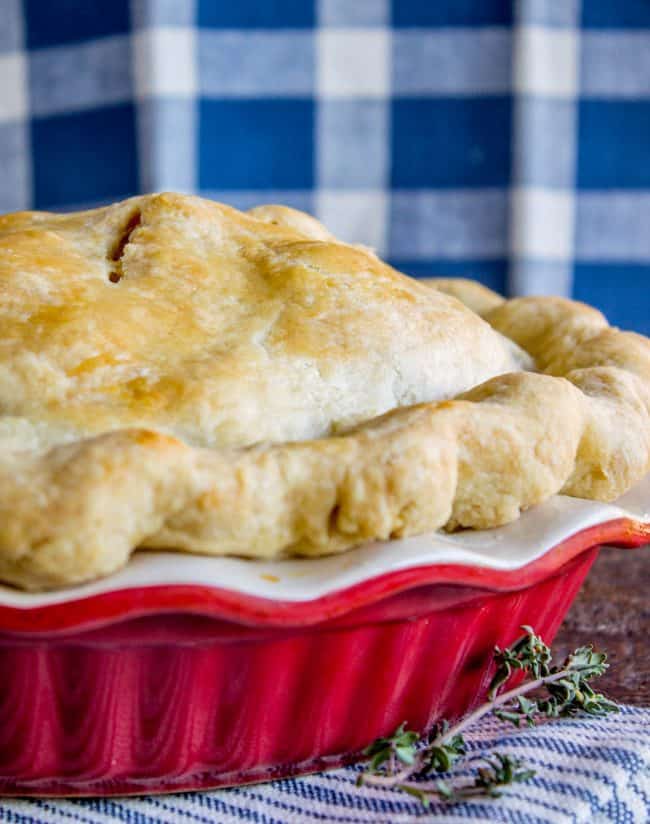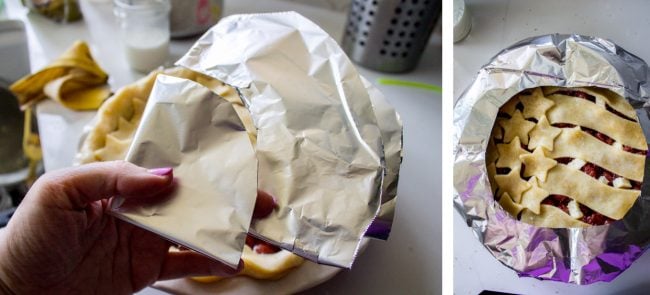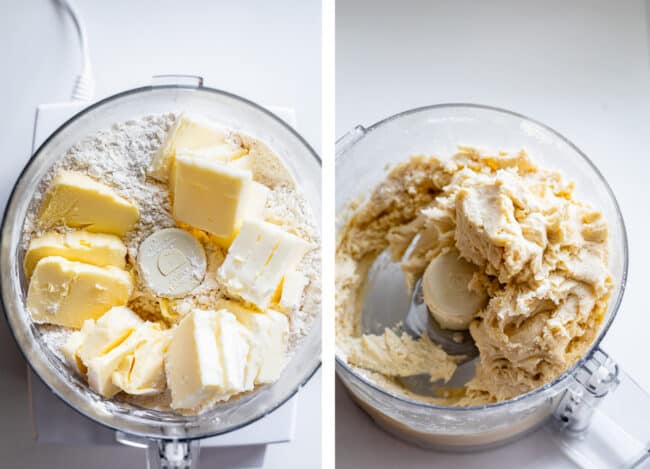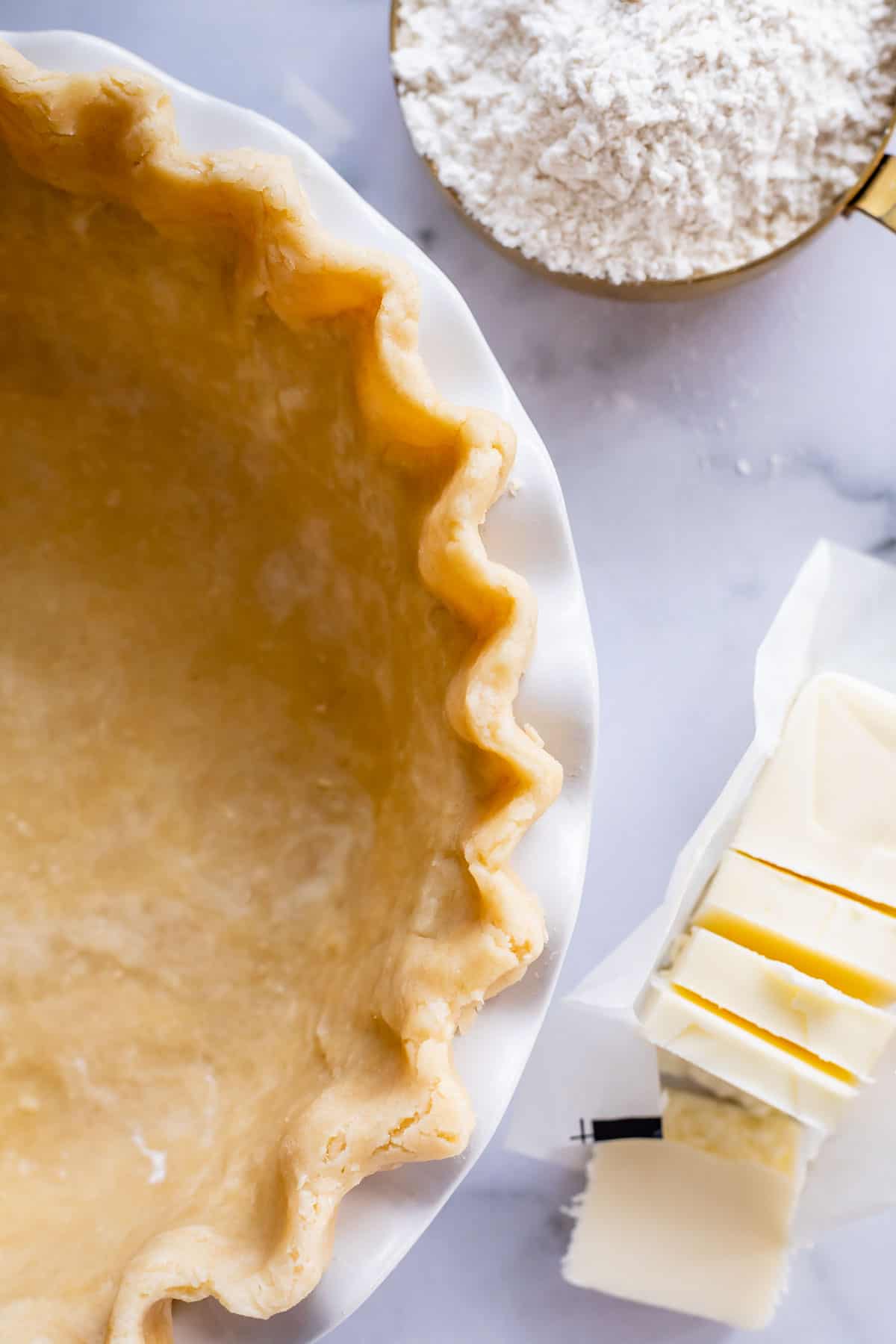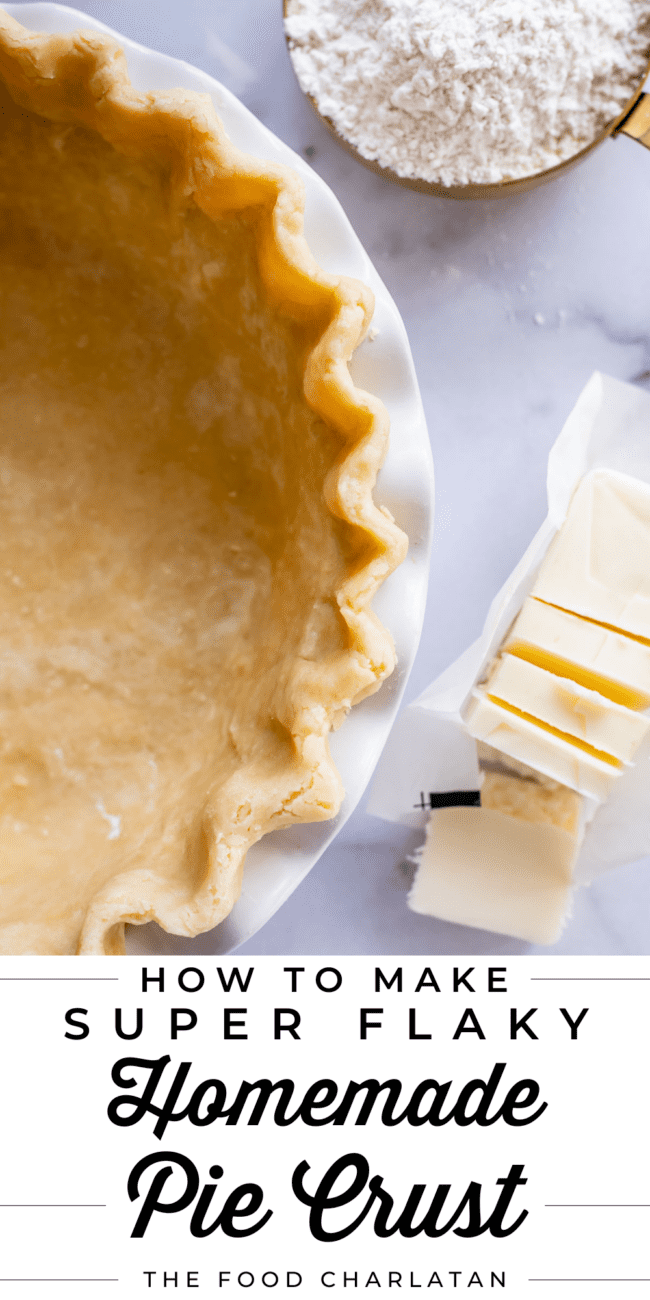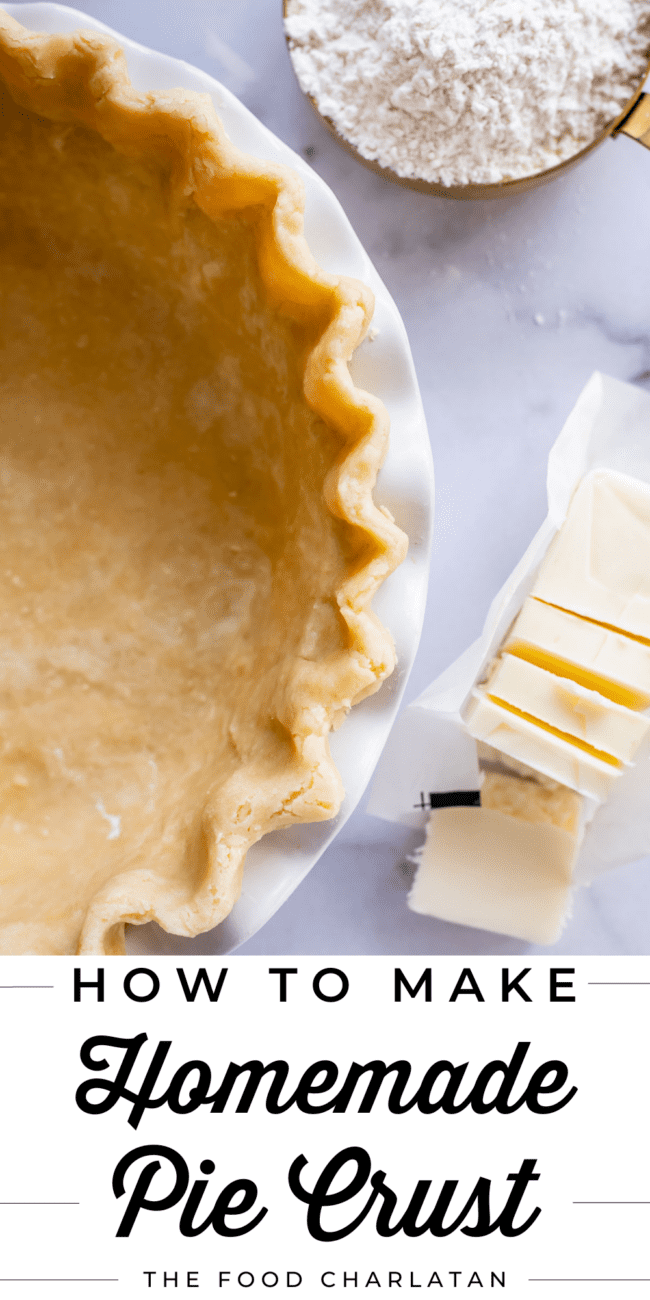My brother was helping with dishes after dinner the other day, and was dismayed to see two pie plates in the sink. “How is it possible that you made two pies and I didn’t get any??” I explained that I was using the pie plates to dredge chicken that I was frying, when I made this Ultra Crispy Chicken Parmesan. He was mollified. I can understand his indignation though. There is no rage quite like missing-out-on-pie-rage. Those two pie plates (that didn’t even contain pie) are nothing compared to the dishes I’ve produced this week. I’ve dubbed it Pie Week. I’ve used every pie plate I own making and testing pies. I’ve baked pies and removed them immediately to different containers just because I needed that particular pie plate for the next pie. SO MUCH PIE. But I’ve finally done it. After nine years of blogging (9 years, y’all!!!! Anniversary post coming soon. I always bake myself a Food Charlatan birthday cake. This year it’s a spice cake, get ready it’s legit.) (UPDATE, Spice Cake is live!) Anyway, after 9 years of blogging I’ve finally written down all the steps (and taken a bajillion photos) of my beloved pie crust recipe. I’ve written this recipe and the basic instructions out for every pie on my site, but it’s time to dive deep and get into all the details of how to get the perfect pie crust! It really does deserve it’s own post. Let’s get into it!
What is the secret to flaky pie crust?
The melting point of lard is lower than butter, which means that more air and steam are released during the bake time. This gives a flakier texture in your pie crust, exactly what we want! So why use butter at all? Because FLAVOR. Nothing tastes quite as delicious as butter. So the answer is to use both! I like to use 8 tablespoons of shortening to 12 tablespoons of butter.
Why I don’t make my Flaky Pie Crust with only butter
The short answer is because I don’t hate myself. Just kidding! Lately it seems really trendy in the food world to use all butter for everything baked, because shortening will kill you, or whatever. I just say moderation in all things. (Plus, I’m never going to stop eating Oreos, and those are made with shortening, sooo…) Here’s the thing: butter melts. If you put a pat of butter in your hand, how long would it take to melt completely? Just a couple minutes probably. Well, the same thing will happen to the butter in your pie crust as you’re rolling it out. Melty butter= melty crust= angry baker.
Flaky Pie Crust Ingredients
Here’s a quick list of what you need to make pie crust. Pretty basic stuff!
Best Pie Crust Recipe Tips
How to roll out Pie Crust from Scratch
Prepare a work surface with plenty of flour. You can do it straight on your counter, or use a pastry cloth (my preference) or roll it out on a sheet of parchment paper. Whisk it together and then add in your fat. I like to use a mix of shortening and butter. We’re going to take a hot minute to talk about these glorious lipids. American butter is only 80% fat. Lard and shortening are 100% fat. Lard is 100% made from animals (and I hear it adds tons of flavor, though I’ve never tried it) whereas shortening, such as Crisco, is made from vegetable oil.
Cut the shortening and butter into the flour mixture
So now that I’ve explained a little bit about the fats used in pie crust, it’s time to add it into the flour mixture. Use a pastry cutter to CUT the butter and shortening into the flour. We are not creaming. We are not mixing. We are cutting and don’t you forget it. Your mixture should look like this: You want various sized pieces of fat, about the size of a pea, or even bigger. Little pockets of fat in your pie is what makes it tender and flaky.
Use egg as some of your liquid
So now that we’ve got all our fat cut into our flour, it’s time to bring it all together with a little bit of liquid. Some recipes use just ice water (again, butter melts; so cold water is essential to keep everything chilled). Some recipes call for vodka or other liquor. But I like to use a mixture of egg and ice water. Why egg? Because eggs taste amazing. They add a richness to your pie crust that you won’t get with just water, and result in a super tender crust. Also, eggs are binders. There is a reason we add eggs to meatloaf: it keeps everything held together. Eggs do the same thing in pie crust. You don’t need much. A large egg is about 4 tablespoons of liquid. I only use 2 tablespoons of beaten egg in my crust. Save the rest for brushing on top of your pie right before baking.
Knead your flaky pie crust together
Now that we’ve got the liquid in, it’s time to knead. Use a spatula for the first part, trying to mix together the flour and the wet part together. But at some point your going to have to dig in there with your hands. I like to do it right there in the bowl. Coat your hand with flour and start pressing the dough together. Keep working it, gathering up the little bits of flour and butter from the bottom, and kneading it until it comes together in a ball. If you have kneaded 8-10 times and it’s still not coming together, add more ice water about 1-2 teaspoons at a time. I hardly ever add extra ice water, but this does depend on climate. The point is, don’t add too much, or you will make your pie dough too sticky. Shape it into a ball and then cut it in half, then shape each half into a disc. This is what you need to make one double-crust pie. If you only need a single pie crust, put the other one in a ziplock and toss it in the freezer for your next pie. It will keep for 3 months. (Thaw on the counter or in the fridge, still in the sealed bag to retain moisture.) See my post for How to Blind Bake a Pie Crust for tips on pre baking and fluting a single crust pie.
Keep Everything Chilled, Especially Yourself!
Now it’s time to chill for about 30 minutes. As Kate from Art of the Pie says, “Keep Everything Chilled, Especially Yourself!” I love this! Pie making is a learning process, and you will have more fun if you keep yourself a little chilled out! It’s also imperative that you take the time to chill your dough throughout the process. Rolling out and shaping your pie crust is SO much easier with slightly chilled dough. If you are having trouble rolling out your crust, or if your lattice is falling apart, clear out some space in your fridge or freezer and toss the whole thing in to chill out. Let the dough sit at room temperature for just a couple minutes to take the chill off. Start rolling from the center moving out. If you notice cracks forming on the edge, use your fingers to mold them back together. Rotate your rolling pin a quarter turn every time you roll. This will create a circle shape instead of a lopsided pie dough. Take the time to dust the pie dough with flour whenever things start getting sticky. Before the circle gets too large, flip the dough over and dust your work surface again, to make sure nothing is sticking. You can do this a couple times throughout the rolling process if needed. There is really nothing sadder than rolling out a perfect circle and then realizing it’s stuck to the counter. Another tip to avoid tearing your dough is to use your fingers to rub excess butter and flour off of your rolling pin. A clean rolling pin is essential for rolling out the dough. A general rule for rolling out pie crust is that when things are too sticky, add a bit of flour. When things are cracking and dry or won’t come together, add a bit of ice water. You can see in the photo above how I’m am fixing that crack with a drop of ice water. Rub some flour on it after you fix the crack, to make sure it doesn’t stick. You should be able to see visible pieces of butter and shortening in your pie crust dough as you roll it out. Roll your pie dough out to about 13 inches if you are using a 9 inch pie plate.
Transfer your pie dough to a pie plate
I like to use my rolling pin to transfer the pie crust into the pie plate. Gently roll it on…
And then roll it out on top of the pie plate. Call someone to help move the pie plate into position underneath your rolled crust, if available. Also, you are gonna need moral support. I’ve probably made over 100 pies and this part is still a little nerve-racking. Just remember, if it tears, you can heal those cracks with ice water and flour. It will be okay!
And here she is. Gently ease the dough into the corners of the pie plate, and press and fold the dough together where it overlaps on itself.
At this point, you can flute the edges for a single crust pie. See my post on How to Blind Bake a Pie Crust for more details on how to flute a single pie crust, and how to blind bake pie crust for cream pies and fresh fruit pies. I will show you how to bake it with weights so that is doesn’t bubble in the middle and slump on the edges.
Fill your pie
If you are making a double crust pie, now it’s time to fill ‘er up. You can just leave the dough hanging over the edge of the pie pan. Tuck it over or under if the edges are hanging down long enough that it looks like it’s going to tear. If your filling is not ready, put the whole pie pan in the fridge or freezer. It’s best to fill a pie with chilled or at least cooled (read: not hot) filling. Once your filling is in, roll out the other chilled crust to about 10-11 inches. Use the rolling pin to transfer the slightly smaller crust on top of the filled pie. OR follow these instructions for How to Make a Lattice Pie Crust! It is so fun.
How to flute a Flaky Pie Crust
Fold your two edges underneath themselves, like so. I know these pie crusts aren’t hanging over as much as the photos above. They are different pies! I told you I made a lot of pies. Anyway, get both edges tucked under nice and neat. (For a lattice pie crust, I like to fold the edges up and over instead of under. See the full lattice post for more details.)Lots of people will tell you to trim your pie crust. Like, use scissors to cut off little bits of your precious pie crust baby that you just spent forever rolling out, and throw it in the GARBAGE. I say heck no. Fold it under.
Press the edges together. Then flute the edges of the pie however you like! You can use a fork to press the edges. I like to use this 3 finger method, or some people do this same thing with their knuckles.
Don’t stress too much about it. Practice makes perfect, so don’t expect it to look amazing the first time! Also remember that it still has to bake, and it will look good no matter what once you take it out of the oven.
Preparing to Bake a Pie with Homemade Crust
If your pie crust is starting to feel warm or overly soft at this point, take a few minutes (15-30) to chill the whole pie in the fridge or freezer. Cold cold pie dough going into a hot hot oven is what makes a flaky, tender crust! Just before going into the oven, brush the pie with liquid. You can use milk, buttermilk, cream, beaten egg white, beaten egg yolk, a whole beaten egg, or any combination you like. I prefer to use the beaten egg (yolk and white) leftover from what I used in the pie crust, mixed with milk. I do a 1:1 ratio, usually 1 tablespoon beaten egg to 1 tablespoon milk. Beat it up and brush it all over the top of the pie and over the edges of the crust. For sweet pies, I like to sprinkle sugar over the top of the pie crust just after brushing. Raw sugar is my favorite because I like how big the crystals are, but regular white sugar adds a nice crunch too. If you did not lattice your pie crust, use a sharp knife to vent the top of your pie. This allows steam to escape. Make any kind of design you like!
Bake your pie
Most pies take about 45-60 minutes to bake. Of course this depends on the recipe you’re using, but generally speaking that’s how long it takes to get your pie crust nice and brown on top. I highly recommend doing an initial bake at a high temperature (I like 425), to get the crust nice and brown, and then lowering the temperature to 350 after about 20 minutes to finish it off.
Cover your buttery Flaky Pie Crust partway through the bake time
Use foil to create a pie crust cover during the second half of your bake time. This will prevent the edges of the crust from burning, while allowing the center of the pie to continue browning. You can buy pie crust shields, but I actually don’t like them. They are usually made of silicone and sometimes they are heavy enough to damage your beautiful fluting job. Tin foil is super light, can be molded around the crust, and cheap! I feel like this Cherry Pie for 4th of July looks like it’s heading for outer space. That crust is safe from burning though! Get a square of aluminum foil a little bigger than the size of your pie. Fold it in half, then in half again so that it’s in quarters. Then use scissors to cut out the middle section. When you open it, you will have a square of foil with a circle cut out from the center. Mold this around the edges of your pie about halfway through your bake time. I usually add the tin foil shield at the same time that I lower the oven temperature to 350.
Flaky Pie Crust Recipe Tools
Pastry cutter. This tool is perfect for cutting butter into flour! I use mine all the time for streusel, biscuits, scones, etc. Pastry cloth. This is not necessary but I find them so handy. You just dust the flour right onto them, and don’t have to worry about your pie crust sticking to the counter. The extra flour absorbs into the cloth instead of into your dough. Rolling pin. I love my marble rolling pin, but any kind will do! Pie plate. Any 9-inch pie plate will do for this recipe. Tin foil for covering the edges of the crust partway through the bake time.
And that’s it! Pie making is so satisfying. It’s nice to have these skills for when you need them. Remember to check out my How to Blind Bake a Pie Crust for all your pudding and fresh fruit pies, and here is a tutorial for How to Make a Lattice Pie Crust. And now, let’s eat some pie! Here are some recipes:
Delicious double crust pies to make!
Cranberry Custard Pie « This is one of my favorite pies to make during the holidays! Rhubarb Custard Pie « Probably my favorite pie of all time. No lie. Rhubarb, you precious thing you. Cranberry Cherry Pie « cherry pie filling with cranberries. What could be better than this sweet tart combo? Apple Pie « This is the only double crust apple pie I will eat. So good! Cherry Pie for 4th of July! « This pie is so pretty, it looks like a flag! Blackberry Pie « my mom’s recipe. I probably ate this more than any other pie growing up! Peach Pie from Lil Luna Fresh Pear Pie from Garnish and Glaze
Single Crust Pies that require no pre-baking (no Blind Baking):
Just pour the filling right into the shaped pie crust while it’s raw. Save the other half of the pie dough in the freezer for another day.
THE Chocolate Chip Pie « Like a chocolate chip cookie, but in pie form. So amazing with ice cream. Pecan Pie Recipe with Buttery Streusel Topping « this is baked with toffee bits in it and Browned butter. YAS!! Crème Brulée Pumpkin Pie « I will never eat pumpkin pie without torching the top again. Ever.
Single Crust Pies that require Blind Baking
This means you bake the crust while it’s empty, then pour the filling in afterward. I’ve got a whole post that shows you How to Blind Bake a Pie Crust. Save the other half of the pie dough in the freezer for another day.
Butterscotch Pie with Meringue Topping « Pudding pies are so amazing on a hot day. Lemon Meringue Pie « I need to update these photos, but this is a family favorite! Fresh Strawberry Glace Pie « This is one of the best summer pies out there! Fresh Blackberry Glace Pie « just like the strawberry version, but with blackberries!
And don’t forget savory pies made with a buttery Flaky Pie Crust!
Classic Double Crust Chicken Pot Pie « The best comfort food out there, I say! Roast Beef, Carrot, and Creamy Potato Pie « It’s like a roast beef dinner, all wrapped up in a pie crust. YUM! Easy Italian Savory Rustic Pie from An Italian in My Kitchen
Facebook | Pinterest | Instagram
